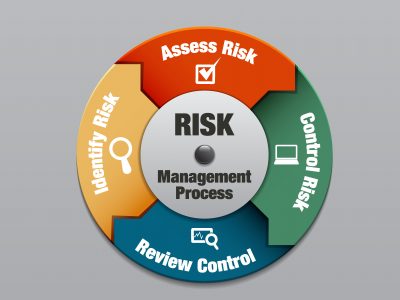We live in a world where risk management is a fundamental perspective to keep in mind while undertaking any journey, towards your goals or your vacation destination. Let’s have a look at a particular risk factor you might want to keep an eye out for while boarding the flying ship to your beach. So you have packed your bags, locked and ready, got your bookings done and handy, picked out the books and tracks that have deserved this vacation by making sure you don’t remember any ‘Air Disaster’ episodes from any season, extra jacket, a change of clothes, extra SD cards, back-up devices, forex, checked your checklist multiple times. What could possibly go wrong? Ever wondered why you went to such length to make a checklist and check it off? Fear maybe? Why those tracks, books to keep occupied on a vacation? Terror maybe?
The fact remains that fear and terror are major contributors to the risks in airline industry. It is one thing to be faced with a problem but it is another to not just be able to deal with it but to take responsibility for others reactions and safety.
One of the major reasons behind this fear and terror among people apart from the documentary ‘Air Disasters’ is the history of hijacking of airplanes. The first time the idea of planes was proven in 1903, the first commercial plane was flown in 1914 and the first incident of hijacking known happened in 1929.
The timeline that follows for the attacks isn’t necessarily reassuring:
The first recorded incident of hijacking took place in 1931 where the hijackers demanded to be flown to Lima from Peru and the pilot refused, which led to a 10-day standoff.
The earliest period of hijacking is marked between 1929-1957. During this period there were fewer than 20 incidents and were majorly concentrated in the European region.
The next major period in the history of hijacking is between 1961-1972. Between 1958 and 1967 around 40 hijackings took place. 1967-1972, also known as the golden period of hijacking, there were 159 hijackings in the US airspace alone and 326 worldwide. According to Brendan Koerner, author of the 2013 book The Skies Belong to Us, the majority of those “were between ’68 and ’72, a five-year stretch, and sometimes they happened at the rate of one per week.” Koerner also stated that “You could have multiple hijackings in the same day – it was not a rare occurrence.” The rate was one per 5.6 days worldwide during this 5-year stretch.
Year 1993 1994 1995 1996 1997 1998 1999 2000 2001 2002 2003 Total
Number 50 25 8 16 12 14 12 22 5 5 7 176
Source: Number of Hijacking attacks according to Wikipedia from 1993-2003
Skybrary.aero mentions that according to the Annexes of the Chicago Convention which talks about Safety Management Systems(SMSs):
Aviation risk management must ensure that risks are systematically analyzed (in terms of probability of occurrence and severity of hazard effects), assessed (in terms of tolerability), and controlled to an acceptable level (by the implementation of risk reduction measures). Aircraft operators and aviation service providers must also define those levels of management with authority to make decisions regarding safety risk tolerability.
Risk mitigation is the third step in the risk management process.
- The first step – hazard identification is carried out in order to identify the hazards in the organizational systems and operational environment and to determine their effects.
- In the second step – risk assessment is the probability of occurrence and the severity of the hazard effects are analyzed and assessed, the magnitude of the risk and its acceptability are determined.
- The purpose of the third step – risk mitigation is to identify measures which when implemented will minimize the risk or even remove it from the system.
When a risk has been found to be unacceptable, control measures need to be introduced. The level of risk can be lowered by:
- Reducing the severity of potential consequences;
- Reducing the probability of occurrence harmful effects;
- Reducing the exposure to that risk.
The optimum solution may vary depending on the operational environment, local circumstances and urgency of the situation. In order to identify meaningful and effective risk reduction actions, an understanding of the adequacy of available system defenses is required.
Risk mitigation measures are introduced with the objective to:
- Eliminate the risk; or
- Mitigate the risk, if elimination is not feasible; or
- Cope with it, if neither elimination nor mitigation is feasible.
The identification of appropriate risk mitigation measures requires a good understanding of the hazard and the factors contributing to its occurrence since any mechanism that will be effective in reducing risk will have to modify one or more of these factors. Risk mitigation measures may work by reducing the probability of occurrence, or the severity of the consequences, or both. Achieving the desired level of risk reduction may require the implementation of more than one mitigation measure.
Skybrary.aero has also mentioned the following document regarding risk mitigation during hijacking:
According to ICAO Doc 9859 – Safety Management Manual, the possible approaches to risk mitigation include:
- Revision of the system design (before system implementation);
- Modification of operational procedures;
- Changes to staffing arrangements; and
- Training of personnel to deal with the hazard.
The expected safety improvement potential of any proposed risk mitigation measure must be assessed by examining closely whether the implementation of the mitigation measure might introduce new risk in the system. This is done by applying the hazard identification and risk assessment steps and evaluating the acceptability of the risk with the proposed mitigation measures in place.
Furthermore, safety performance monitoring should be used to evaluate the effect of the implementation of the risk mitigation measures. It is important to verify that the mitigation measures are working as intended.
- The first thing the pilot has to do is to punch 7500 on the transponder which will alert Air Traffic Control (ATC), said Mohan Ranganathan, a former Boeing 737 commander, and air safety analyst.
- The code will give a special indication and the aircraft blip will appear as a sunburst on the ATC radar screens. This makes sure that the code is noticed regardless of the attentiveness of the ATC. The aircraft has to be diverted to the nearest airport and the rest of the traffic put on hold.
- The ATC will have to give the aircraft priority landing and clear all traffic below so the aircraft can land unhindered. According to their source – if there is a bomb threat, the pilot has to quickly climb down 10,000 feet and depressurize the airplane to reduce risk in case the bomb explodes.
- The cockpit door has to be locked and no entry allowed in the cockpit. Both pilots and crew also have codes to communicate the threat but this is kept secret and differs from airline to airline, according to another source.
As of 2017, India has witnessed around six hijacks since 1947, the last major one occurring in 1999 when Indian Airlines Flight IC-814 from Kathmandu was commandeered by militants and diverted to Kandahar, Afghanistan.
India enforced multiple laws in 2016 to strengthen the risk mitigation measures for such a crisis.
Submitted by: Ritvi Mishra, Member – Student Risk Committee











